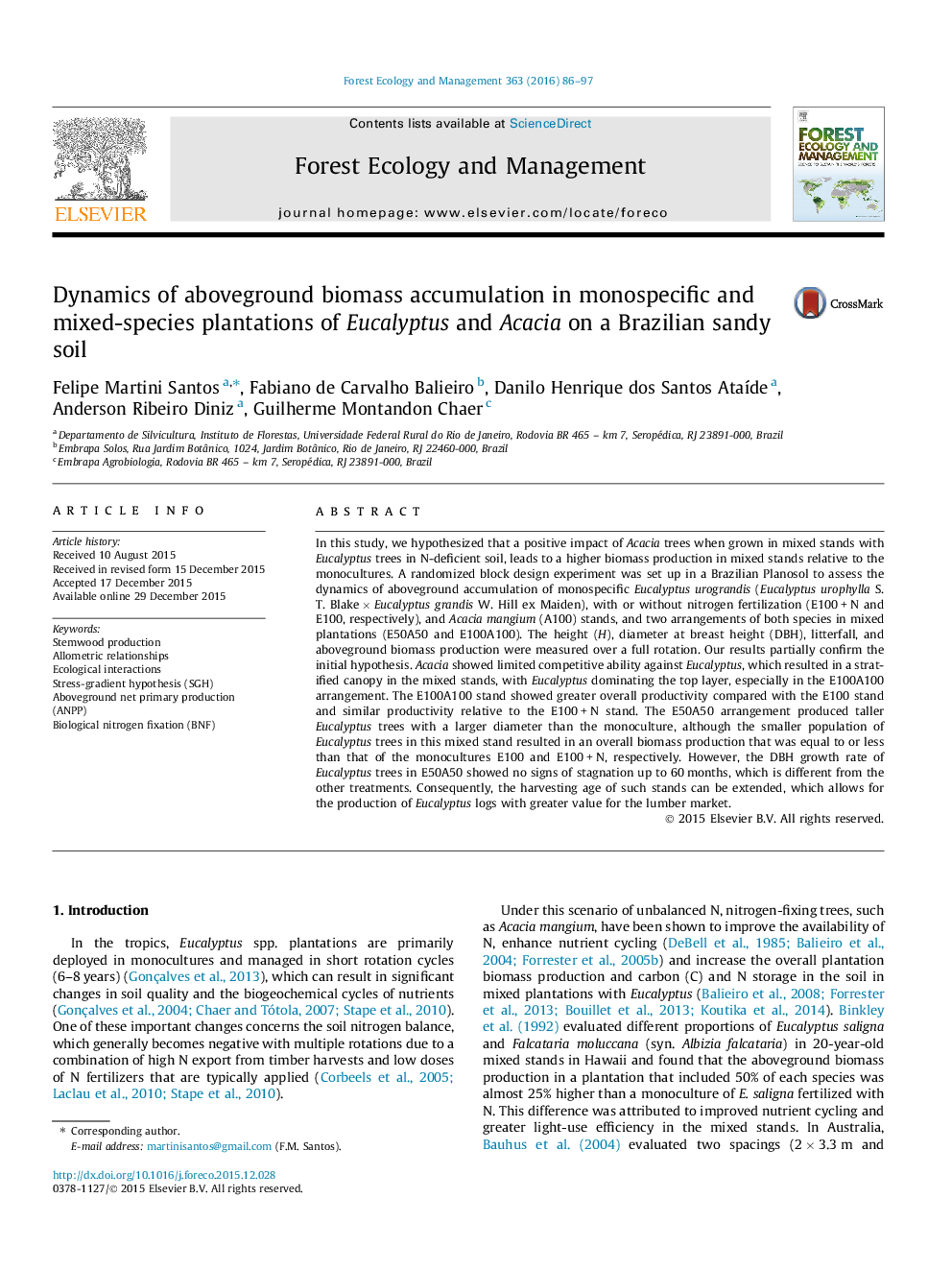| کد مقاله | کد نشریه | سال انتشار | مقاله انگلیسی | نسخه تمام متن |
|---|---|---|---|---|
| 86013 | 159157 | 2016 | 12 صفحه PDF | دانلود رایگان |
• Monospecific and mixed-species plantations of Eucalyptus and Acacia were studied over an entire rotation in a N-deficient soil.
• Complementarity and facilitation enhance the total biomass production in the mixture relative to monospecific stands.
• Acacia growth was suppressed early by Eucalyptus trees in mixed stands.
• Eucalyptus trees have still high growth rates 5 years after planting in the mixtures with 50% of Eucalyptus and Acacia.
In this study, we hypothesized that a positive impact of Acacia trees when grown in mixed stands with Eucalyptus trees in N-deficient soil, leads to a higher biomass production in mixed stands relative to the monocultures. A randomized block design experiment was set up in a Brazilian Planosol to assess the dynamics of aboveground accumulation of monospecific Eucalyptus urograndis (Eucalyptus urophylla S. T. Blake × Eucalyptus grandis W. Hill ex Maiden), with or without nitrogen fertilization (E100 + N and E100, respectively), and Acacia mangium (A100) stands, and two arrangements of both species in mixed plantations (E50A50 and E100A100). The height (H), diameter at breast height (DBH), litterfall, and aboveground biomass production were measured over a full rotation. Our results partially confirm the initial hypothesis. Acacia showed limited competitive ability against Eucalyptus, which resulted in a stratified canopy in the mixed stands, with Eucalyptus dominating the top layer, especially in the E100A100 arrangement. The E100A100 stand showed greater overall productivity compared with the E100 stand and similar productivity relative to the E100 + N stand. The E50A50 arrangement produced taller Eucalyptus trees with a larger diameter than the monoculture, although the smaller population of Eucalyptus trees in this mixed stand resulted in an overall biomass production that was equal to or less than that of the monocultures E100 and E100 + N, respectively. However, the DBH growth rate of Eucalyptus trees in E50A50 showed no signs of stagnation up to 60 months, which is different from the other treatments. Consequently, the harvesting age of such stands can be extended, which allows for the production of Eucalyptus logs with greater value for the lumber market.
Journal: Forest Ecology and Management - Volume 363, 1 March 2016, Pages 86–97
